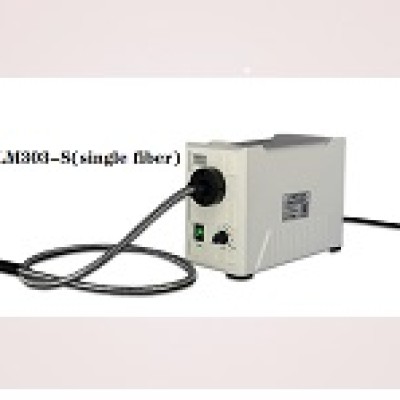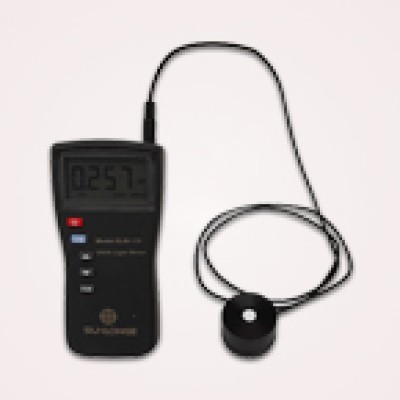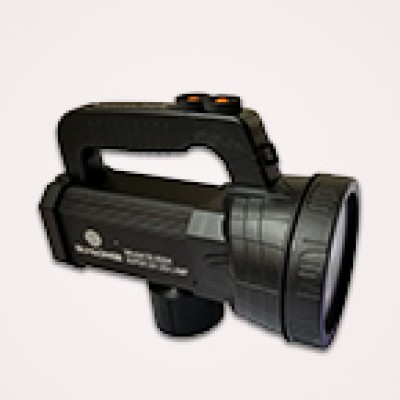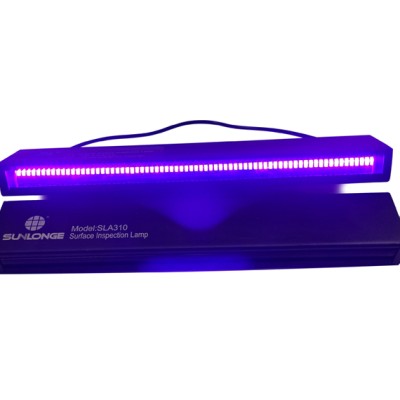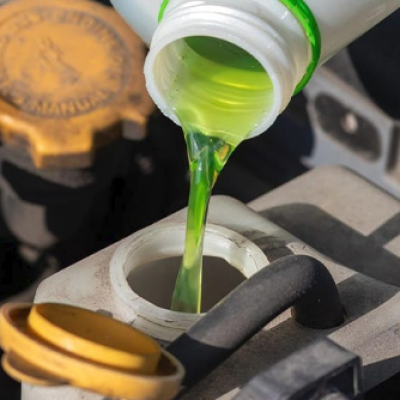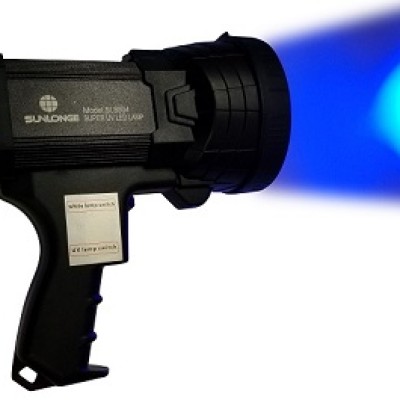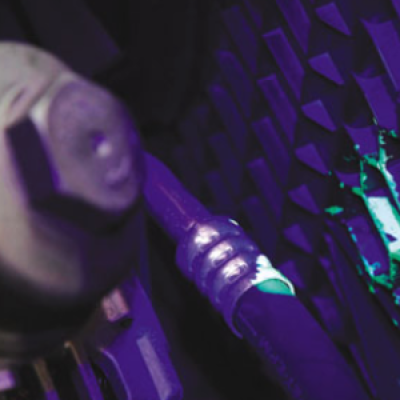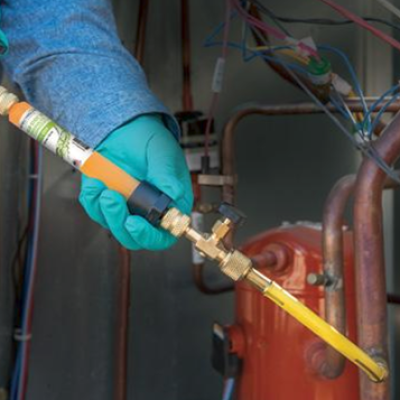UV -A intensity: what is special about 5000 uw/cm2.
Most UV-A lamps on the market are set to provide 5000 uw/cm2 at a distance of 15 inch/38cm. What is so special about those numbers?
Physics of light

To compare the intensity of UV-A lamps in fluorescent inspection, our industry has set a standard distance of 15 in / 38 cm as a benchmark. Using a standard distance, the relative performance of different lamps can be compared directly.
Human vision
The more UV-A available, the brighter the fluorescence will be. But there are limits. In nature, the light spectrum is continuous. There is no natural difference between what we call UV-A and what we call visible light – those are artificial divisions. Human vision, in the same way, is continuous. There’s no hard-line cutoff of what the eye can perceive, and light perception changes as we age.
In the dark environment of an inspection booth, human vision can perceive some UV-A light. Even though fluorescence increases with increasing UV-A, there are diminishing returns as far as what you can see. Too much UV-A can overpower a fluorescent indication – this is commonly called “veiling glare”.
UV-A Intensity Studies
Studies on the effect of UV-A intensity on fluorescence have demonstrated that the dyes and pigments used in penetrants and magnetic particle materials can degrade with long exposure to very intense irradiation. Exposure to high levels of UV-A over time will decrease the amount of fluorescent light produced. This effect is commonly described as “fluorescent fade”.
To guard against both veiling glare and fluorescent fade, maximum UV-A intensities have been established. The details vary with industry standard, OEM, Prime, and application. Many authorities permit UV-A intensities up to 10,000 µW/cm2, but exposure time must be limited to prevent fluorescent fade. The maximum intensity of 5,000 µW/cm2 according to ISO 3059 is commonly accepted as safe for extended exposures.
Conclusion
We have a standard distance of 15 in / 38 cm thanks to the way that light works. And we have a maximum intensity of 5,000 µW/cm2 thanks to how human vision and fluorescence work.
The concerns leading to maximum intensity are about the intensity at the examination surface regardless of lamp distance. While a hand-held lamp may be commonly used at the standard 15 in / 38 cm distance. In the case, the UV-A intensity at the examination surface needs to be controlled. But at the standard 15 in / 38 cm, the intensity would be less than 560 µW/cm2.
when they are used as designed and intended, they are perfectly acceptable. That’s because ISO 3059 and other standards set the maximum intensity limit of 5,000 µW/cm2 at the examination surface, not at a standard distance of 15 in / 38 cm
 CN
CN

